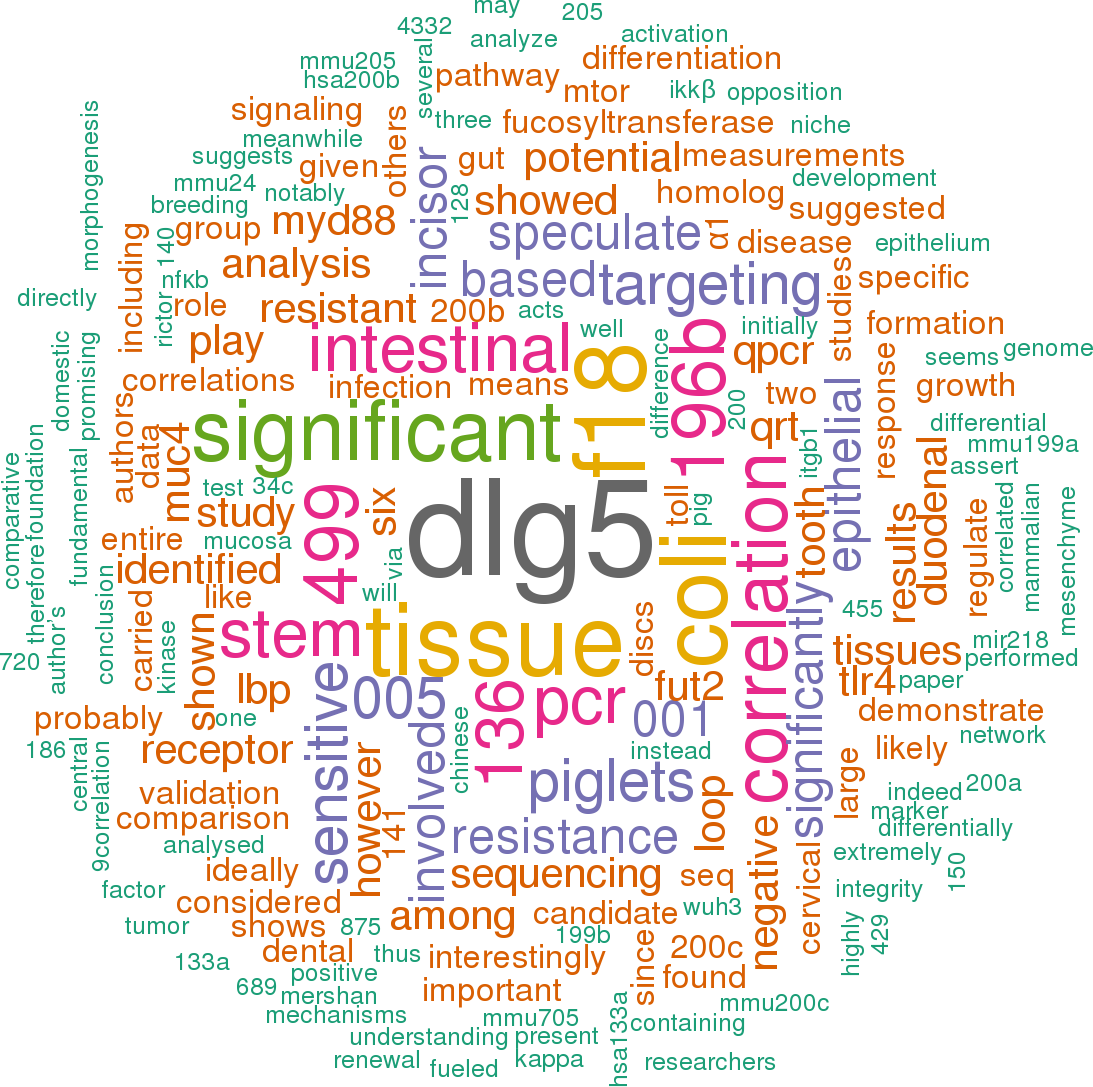6 papers mentioning ssc-mir-218-1
Open access articles that are associated with the species Sus scrofa
and mention the gene name mir-218-1.
Click the buttons to view sentences that include the gene name, or the word cloud on the right for a summary.

 |
 |
 |
 |
 |
 |
